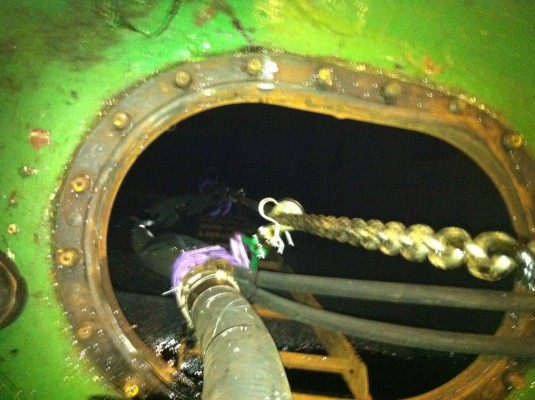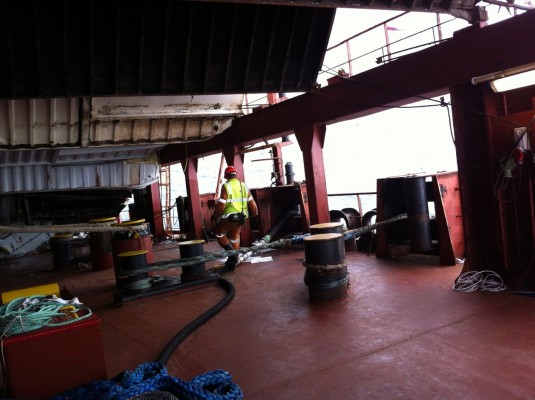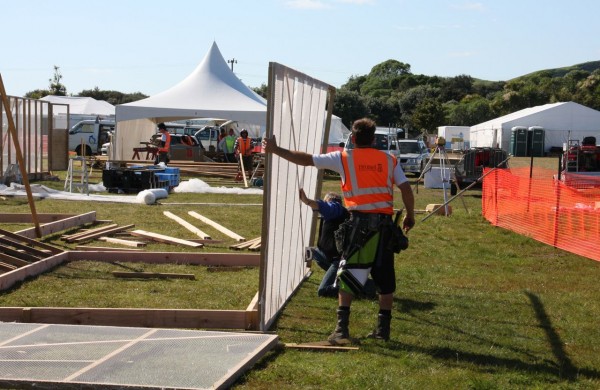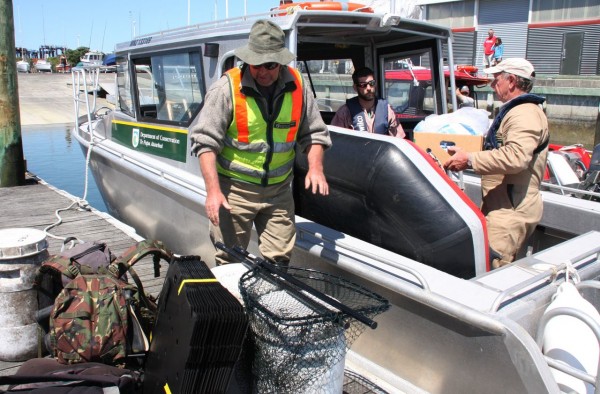TVNZ Cock Up Rena Story
Last night, TVNZ ran an alert on their 10pm news, and tweeted it, saying the Rena was breaking up.
Maritime NZ says TVNZ cocked it up.
They accidentally ran live a story they had pre- prepared in case it did break up.
It’s like the famous tales of various news media declaring people dead when the button was pressed accidentally on a pre-prepared obituary. Not a good look.
Anyway, Maritime officials say the report is completely wrong.
“This is incorrect – Rena’s condition has not changed since the last substantial change reported by us around 12 October, when cracks appeared on the starboard side following bad weather.
They say salvage company Svitzer is carefully monitoring the condition of the vessel. They have had crews on board Rena continuously since October 20.
These crews are watching for any significant signs of deterioration on the vessel, as is the team on board Awanauia. Svitzer also has motion sensors and real time GPS equipment monitoring the bow and stern. If they detect unusual movement that suggests a deterioration of the vessel’s condition, the on-board crews will be evacuated.
As for the oil pumping – good progress but now comes the tricky part.

Rena disaster: Access to the fuel tanks is limited | Svitzer
The removal of fuel from the cargo vessel Rena continued overnight with the salvage team confirming they are now past halfway.
However, the second half of the oil is in around four tanks, rather than one – and one of them is submerged underwater.

Conditions on board the Rena are dangerous | Svitzer
Maritime New Zealand Salvage Unit Manager Bruce Anderson said it was encouraging to reach the milestone, but warned the second half of the fuel posed some serious challenges.
There was around 1700 tonnes of fuel oil on Rena when it grounded on the Astrolabe Reef on 5 October. Around 350 tonnes has spilled from the ship, and as at 3pm yesterday a confirmed total of 645 tonnes had been transferred to the tanker Awanuia.
“The salvors now have the pumping system working well and they are getting good transfer rates, which is excellent.”
The salvors are today trying to establish a fuel transfer system from the three tanks in the engine room, which together hold around 250 tonnes of oil, to the tug Go Canopus.
The salvors are currently pumping from these tanks into the port number 5 tank and then onto Awanuia.
“Transferring the oil direct to Go Canopus will hopefully speed up the process,” Mr Anderson said.
National On Scene Commander Rob Service said the team at the incident command centre was continuing to prepare contingency planning in case the remnants of the 5-10 tonnes of oil released from the ship overnight on 22/23 October reached Tūhua/Mayor Island or the Coromandel.
On current projections, the remaining oil is not expected to reach land for two more days.
Mr Service said as the oil had now been in the water for several days, any remaining oil would be weathered and likely to wash up on shoreline as tar patties or tar balls.
Operational teams were going to both areas today to assess response options.
“We have a team going to Tūhua today to assess the use of booms to protect key areas. We have also sent teams to assess the impact any oil reaching the shore could have on wildlife.”
A wildlife stabilisation site had been set up on the island.
There’s a new enclosure for little blue penguins at the Wildlife Response Centre at Te Maunga.

The builders aim to have 10 aviaries, each can house up to approximately 25 penguins, and has an indoor pool and communal areas for the penguins to preen, feed and swim.
Oiled Wildlife Response Manager Kerri Morgan said it was important to monitor the penguin’s health and condition, especially at feeding times.

DoC staff loading up gear for wildlife assessment on Mayor Island | MNZ
“Correct feeding is a critical part of the rehabilitation process and our staff take great care.
“We use either sprats or anchovies and need to ensure that none of the natural oils from the fish get on the birds’ feathers as this can damage their natural waterproofing. The penguins are all doing really well and have a great fighting spirit,” said Ms Morgan.
“We have 314 penguins in our care and the enclosures will be able to house them more comfortably long term. It is too early at the moment to say when they can be released, but we want to ensure all the penguins are healthy and well nourished before this takes place.”
The penguins get fed twice a day and eat five to seven fish per feeding. They also have one swim a day. This lets them condition and preen their feathers, which is crucial to their re-waterproofing.
In total the centre now has 379 live birds in its care.
This includes the 60 New Zealand dotterels that were caught pre-emptively.
Yesterday there were:
- clean birds: 60 NZ dotterels, 1 shearwater, 1 tern, 3 pied shags and 206 little blue penguins
- oiled birds: 108 little blue penguins.











3 Comments
Good actual information which I am searching every day.
Huge Respect for the salvors .
I’m enjoying the fact that there’s only 1700 tonnes of fuel to worry about.
It makes it seem a lot less than TWO MILLION LITRES!
(based on diesel density)
Spin is everywhere..
Both TVNZ and TV3, and all our newspapers, are unscrupulous in their leading stories and hype.
I guess they know that most people see through their spin and exaggeration, but persist with it because traditionally “that’s what newspapers do”. (They have never been objective.)
Despite the majority realising the the news often takes us for a ride, their catastrophying can’t be good for our community. I wonder how many heart attacks have been caused by the constant stress of disaster that the news runs - as they’d say - it’s epidemic with potentially fatal results.